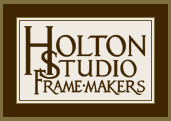This'll be the last post here on Blogger. From now on you'll find my blog on my BIG, BEAUTIFUL AND MUCH IMPROVED new website!!!
Three and a half years ago I started tinkering with WordPress to see if I could build myself an online catalog. A year or so later, Matt Jalbert, to whom I'll forever be grateful for dragging Holton Studio into the digital age with the website we launched in 2010, gave up freelance web design. So I went out to find a new designer. I quickly landed on Computer Courage in Berkeley, which had going for it—in addition to clear business integrity—the fact that they build sites using WordPress, and could therefore simply integrate the catalog I'd been building into a new site. Of course, the possibilities of an entire site built such that I could manage all the content myself were intoxicating, and hence the over-long process of getting this thing up and running.
But it's finally done and ready for prime time, and so here you go—years in the making, the all new and improved HoltonFrames.com!!!
What are the highlights?
- A wider format, much bigger images, and WAY more pages. You'll get click-happy drilling down through pages (especially in the Frame Catalog) and enlarging pictures!
- A Frame-Maker's Catalog — truly a virtual showroom of the vast majority of our frame designs, well organized and easy to browse. Should be a great tool for our many mail order customers.
- The Portfolio — GREATLY expanded brag book and framing design idea book featuring not only frames we're particularly proud of but wonderful pictures by great artists like Benjamin Williams Leader, Peder Monsted, Albert Bierstadt, William Keith, Joseph H. Sharp, Arnold Friberg, Gustav Baumann, Thomas Moran, Thomas Hill, Carl Sammons, Thaddeus Welch, Grace Carpenter Hudson, James Audubon, George Catlin, Hiroshi Yoshida, A.D.M. Cooper, Alfred DeBreanski, Rosa Bonheur... and many more! Just because the website was dormant doesn't mean the Studio was. We've done some of our best work in these last couple of years since I'd updated the portfolio.
- In Stock—great frames, mirrors, photo frames and miscellaneous artwork all ready to ship or pick up at the shop.
- Specialty Mirrors — since the beginning, these are some of the best work I've done, involving hand carving. The old site barely mentioned these designs and didn't do justice to their fine details. The new site features a couple dozen in big, clear pictures.
- The Blog is integrated into the site itself instead of being here at Blogger.

















